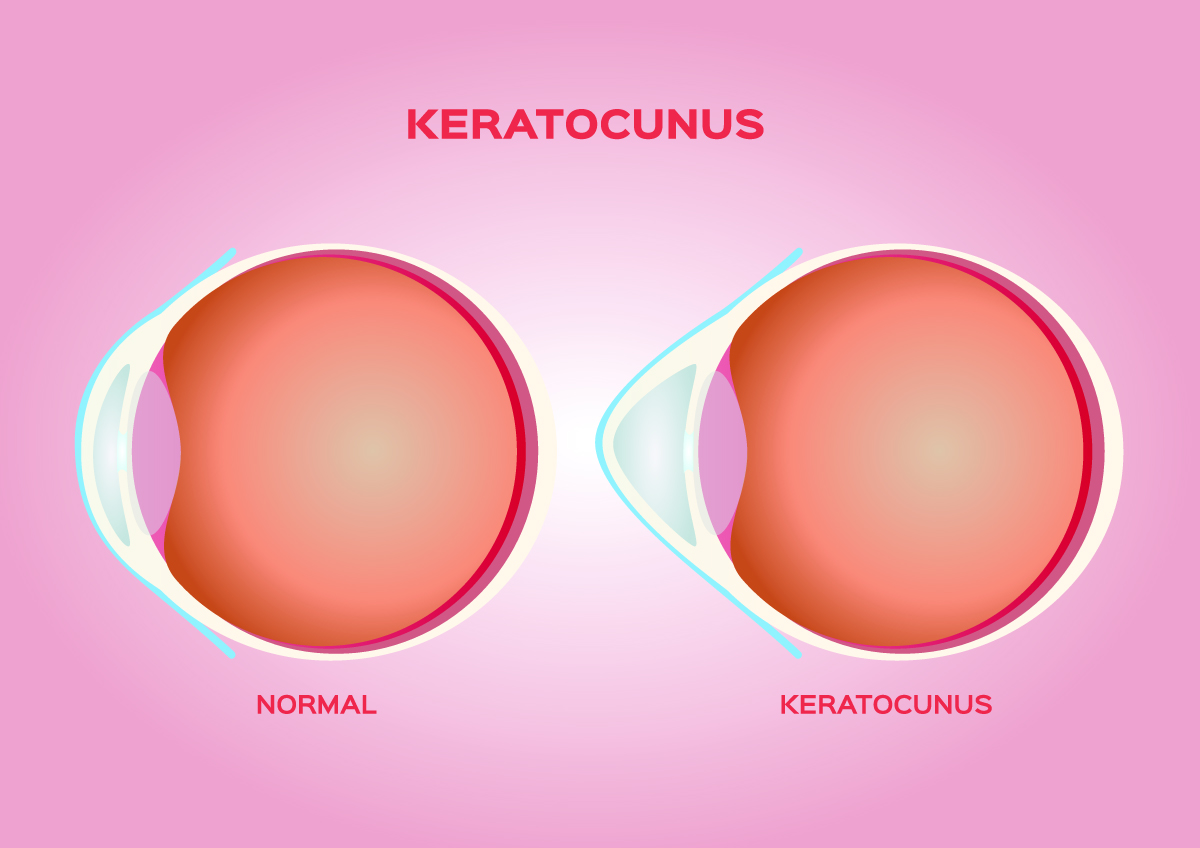The good news is that keratoconus rarely results in total blindness. However, this degenerative condition can lead to extensive vision loss. Dr. Raymond Stein, the Medical Director of the Bochner Eye Institute and Professor of Ophthalmology and Vision Sciences at the University of Toronto, discusses the signs and symptoms of keratoconus and treatment options.
What Is Keratoconus?
This progressive eye disease involves the thinning and stretching of the cornea. This causes a cone-shaped bulge in the normally round cornea, resulting in blurry vision. While keratoconus affects both eyes, one is usually more affected than the other.
These corneal changes generally begin in childhood and adolescence. However, certain hormonal changes can trigger the onset of keratoconus in adults.
Rather than lead to complete blindness, keratoconus tends to cause only partial vision loss. However, if undiagnosed and untreated, the potential for total blindness increases.
Risk Factors
Keratoconus occurs more often in people living in sunny, dry climates. That is likely due to dusty environments causing more eye irritation. Anyone experiencing constant eye allergies, resulting in eye rubbing, is at increased risk of developing keratoconus.
Family history and genetics are major keratoconus risk factors. If immediate family members suffer from keratoconus, your odds increase significantly. People with Down syndrome are particularly vulnerable to the disease.
Changes in hormone levels during puberty or pregnancy can lead to thinning corneas and keratoconus. So can the use of hormone replacement therapy after menopause.
People from India, Pakistan, Saudi Arabia and Iran run a higher risk of keratoconus development.
Keratoconus Symptoms
Blurred vision is one of the earliest signs of keratoconus. Other symptoms of keratoconus include:
- Double vision
- Eye strain
- Light sensitivity
- The need to frequently update glasses or contact lens prescriptions (note that new prescriptions do not provide clear vision)
Treatment
There is no cure for keratoconus, but treatment options are available. The use of contact lenses can correct irregular corneas via the provision of a smooth ocular surface. Mild cases of keratoconus may require no other treatment.
FDA-approved corneal crosslinking uses ultraviolet light in combination with Vitamin B eyedrops to stop keratoconus’ progress by strengthening the integrity of the cornea.
Those with severe keratoconus may benefit from a corneal transplant. The new cornea, coming from a human donor, replaces the diseased cornea. While the result is substantial visual improvement, corneal transplants are performed only on those most afflicted.
After treatment, patients should expect to continue wearing glasses or contact lenses.
Contact Us
If you or your child are experiencing blurry vision or other symptoms of keratoconus, schedule a consultation with Dr. Stein today. An early diagnosis can make all the difference when it comes to disease progression.
